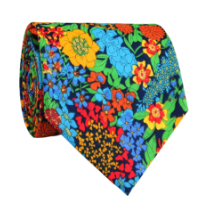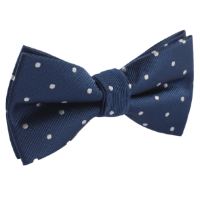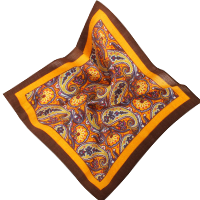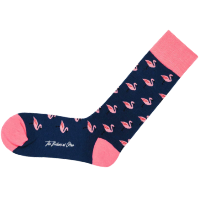Can You Wear a Lapel Pin with a Pocket Square?
Lapel pins offer a unique opportunity to elevate both formal and casual outfits. Traditionally reserved for formal occasions, they are now versatile accessories that you can wear with various garments, including shirts, sweaters, and coats. This lets you add a personal touch to your look, whether heading to the office or a weekend brunch.
Of course, there is a line between tacky and sophisticated in fashion-forward dressing, and it can be hard to know when you've crossed it.
To be admired for your style, you must demonstrate your ability to take risks and put your most fashionable foot forward when it counts. However, what's even more admirable is knowing when to stop before things get overdone. This takes a bit of insight and wisdom, and a lapel pin guide can help you.
We're here to explain how to wear two traditional accessories: a classic lapel pin and a pocket square.

The History of Lapel Pins
What are lapel pins used for? Lapel pins have a rich historical context. Originating from military uniforms, where the buttonhole on the lapel was functional, the flower on the lapel became a symbol of distinction. Boutonnieres gained popularity in the 19th century as symbols of manliness and sophistication. Over time, they evolved into stylish accessories worn for various formal occasions, adding an elegant touch to men's attire.
Proper Lapel Pin Placement
When you pair a lapel pin with a pocket square, it can have one of two impacts:
- Overdone
or
- Artistically sophisticated
Knowing how to achieve the latter requires restraint and poise. Proper placement is essential to ensure your lapel pin enhances your outfit without overwhelming it.
Traditionally, it would help to place the pin on the upper part of your left lapel, where the buttonhole is or would be, ensuring it runs parallel to the closed end of the lapel.


How to Style a Lapel Pin
It's essential to strike the right balance between your necktie, lapel pin, and pocket square. Think about colour, texture, and pattern. Only some things on your suit should make a loud statement. If you layer one statement piece over another, you'll ultimately strike them both out. You don't want to cause visual disarray.
These guidelines for pairing your accessories are crucial. Enamel pins should match the colour scheme of your suit, tie, and pocket square. Metal lapel pins should correspond with your outfit's overall metal tone. More uncomplicated, subtle details often create a more sophisticated appearance, and balancing these elements can make or break your look.
Can You Wear a Lapel Pin with a Pocket Square?
Yes, you can wear a lapel pin with a pocket square. However, you need to be strategic about creating a comprehensive overall look.

Rule 1: At least one thing — your tie, lapel pin, or pocket square — has to be solid. That means no pattern.
Rule 2: Only two of your ties, lapel pin and pocket square can be statement pieces.
Rule 3: Your tie, lapel pin, and pocket square must be in at least two complementary colours.
Types of Lapel Pins
Types of lapel pins vary widely, each suited for different occasions and styles. These include boutonnieres, floral pins, stick pins, mini pins, badges, and brooches. For instance, a boutonniere may be ideal for a wedding, while a mini pin could add a subtle flair to a business suit.
Wearing a lapel pin requires confidence. As a bold accessory that naturally draws attention, it's essential to wear it confidently. Confidence in your style choices ensures you look polished and not "try-hard."
Three (3) Examples of How to Wear a Lapel Pin
While there are traditional rules for lapel pin placement, there's room for experimentation. Although placing a lapel pin on your left side is standard, feel free to experiment with different looks and outfits as long as you've given the placement careful thought. This balance between tradition and personal expression is vital to making the lapel pin your own.
Figure 1.

Figure 1. Shows a balanced and safe combination of a brown tie, white pocket square, and metallic lapel pin. It's clear that the tie and pocket square match in colour, so there's room to choose a quirky lapel pin. Pictured: Rabbit Lapel Pin.
Figure 2.

Figure 2. Cleverly uses patterns to create harmony between accessories. The gentleman has paired a patterned dress shirt with a polka-dot tie and lapel pin, while the pocket square remains plain.
Figure 3.

Figure 3. Cleverly uses colour arrangement. The lapel pin complements the yellow tie yet pops against the deep colour of the suit. It doesn't clash with the pocket square, which matches the suit.
Let's consider the event type. Distinctive metallic pins are more suitable for professional settings, while floral or boutonniere pins are likely better suited for social occasions. Understanding the context in which you're wearing your lapel pin will help you select the most appropriate style.






